How Do I Start Doing SEO in 2023?
In simple words, search engine optimization (SEO) is a set of measures you take to help your website rank on search engines like Google.
Why does this matter?
In a previous blog post, we mentioned that 70-80 percent of your potential customers are actively searching on engines like Google for solutions.
Thing is, if you’re not on the first page of results, the chances of people clicking on your website decrease almost exponentially.
From a study analyzing roughly 4 million search results, the top three Google search results that weren’t ads received the most clicks from viewers (Backlinko).

In other words, if you want to increase your visibility when people search for your services or products, you’ll need to optimize your website for search engines.
This post will focus on how to do SEO even if you’re new to it.
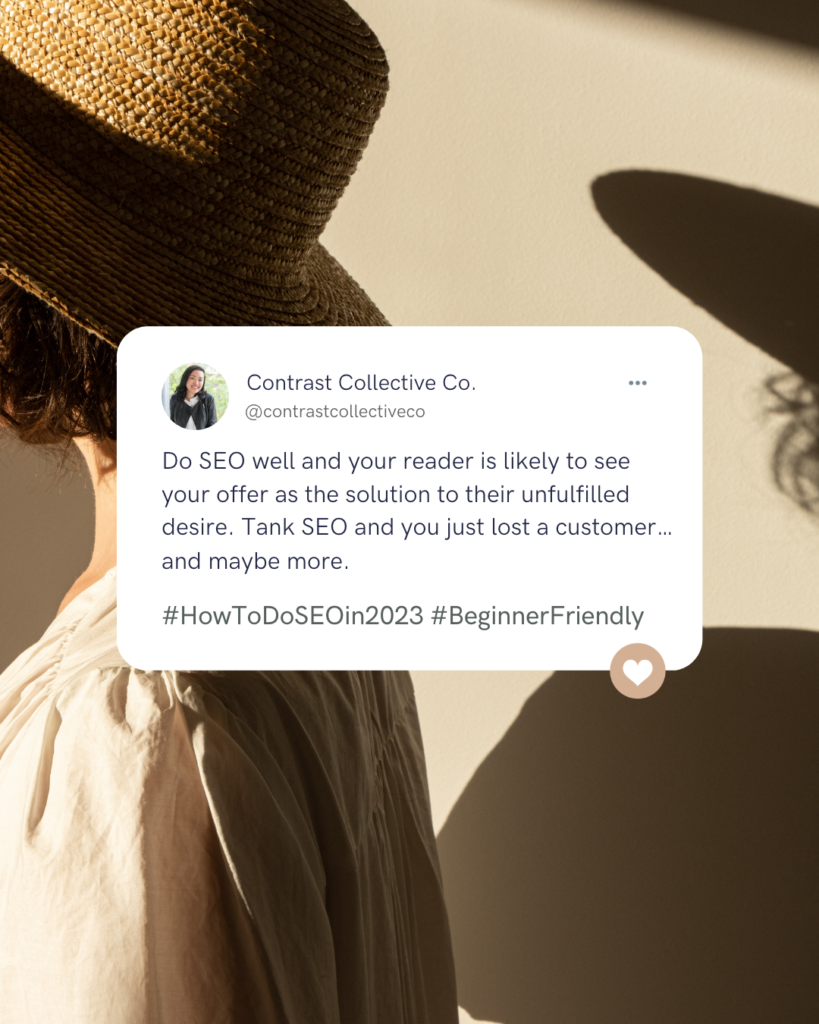
Can I do SEO on my own?
You can definitely start on SEO by yourself. As your business grows, you can plan and execute more sophisticated SEO strategies.
The thing to note about SEO, as with a lot of things in business/life, is that it takes effort and time. You can’t microwave SEO.
But once you know the basics of SEO, it’s not very hard to learn.
5 Pillars of SEO
There are roughly 5 parts involved in SEO:
- Keyword research: look up commonly-used phrases that searchers use to find what they’re looking for.
- Content creation: craft content that try to answer your users’ questions and get them one step closer to their desired solution.
- On-page SEO: make content easy to find on your website.
- Link building: establish credibility through guest features or links from other sites.
- Technical SEO: structure your website so that search engines can find and index your site easily and efficiently.
1. Keyword Research
Simply put, keyword research is the process of identifying what phrases are used by people searching online. This is key (no pun intended) because it can help reveal why a person might be typing this in.
In other words, keyword research can uncover search intent.
For example, say I recently got engaged, and my fiancé and I were looking to get married in Toronto, Canada.
To help us look for the perfect reception venue, I might type the following phrase into Google: “wedding reception venue”.
Now, you might say that’s a bit too vague—and you’d be right!
This is an example of a fat-head keyword because it’s general and most likely searched by a lot of people (high search volume).
If I refined my search and typed in “affordable wedding reception venue in Toronto, Canada”, I’ll most likely see more results based in Toronto.
This is an example of a long-tail keyword because it’s a longer and more specific keyphrase.

Long-tail keywords are the meat and potatoes of keyword research because they uncover the solution that people are looking for.
As a result, Google will search the web for websites that might be able to answer the query.
A word of warning, however—don’t stuff your posts or websites with keywords only (aptly named “keyword stuffing”) or you might be penalized by Google.
And the last thing we want is the search engine blacklisting our businesses.
How do you do keyword research?
There are advanced keyword research tools like Moz and SEMRush, and I’ve tried both, that help crawl search engines.
Typically, these software tools are on a subscription basis and provide you with data like how many people search for which keywords per month, what keywords do your competitors rank for, etc.
However, if you’re just starting out or are on a budget, you can try this hack:
- Go on Google and type in a specific keyword (e.g. dog walker).
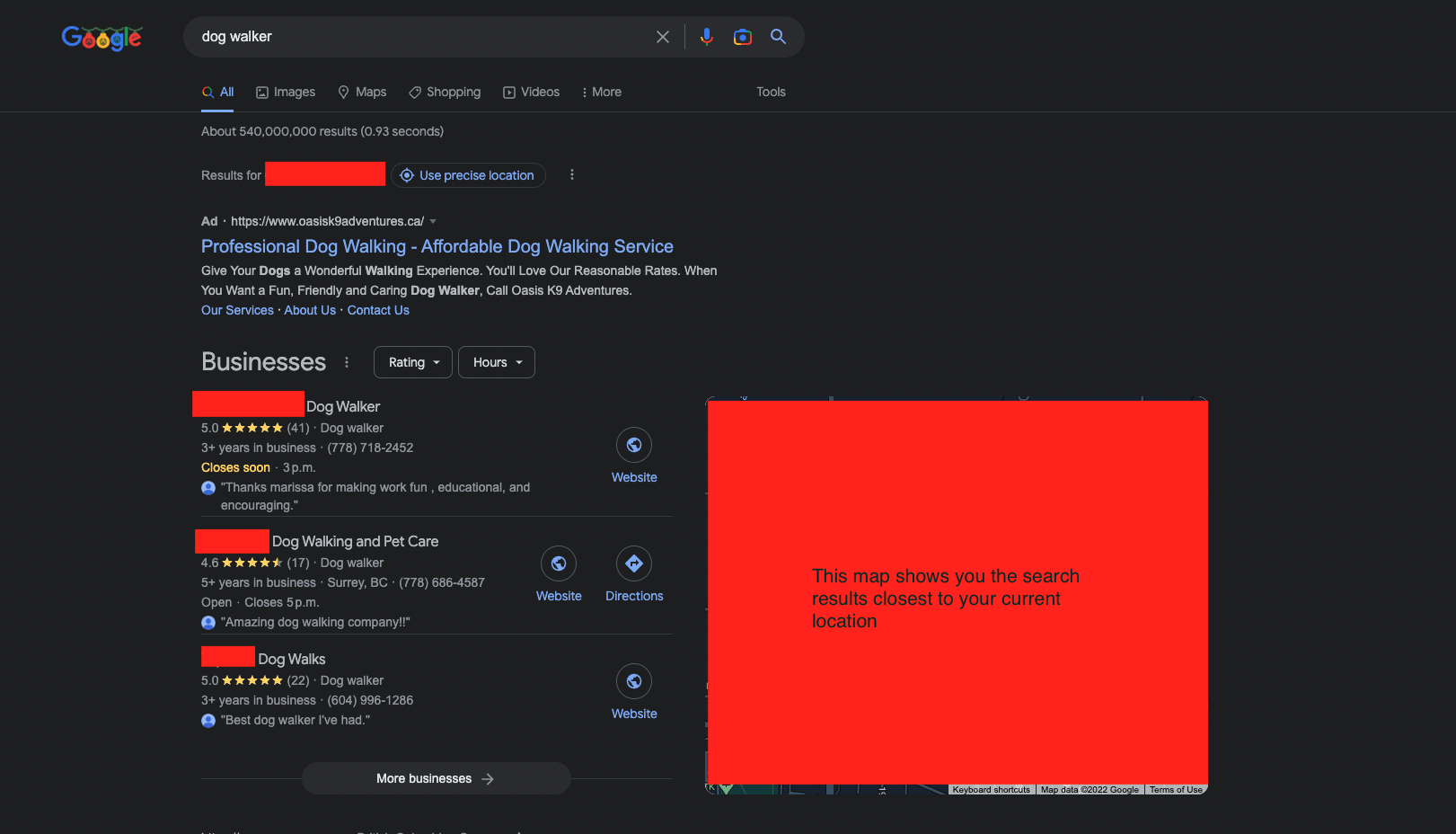
- Scroll to “People also ask”. You’ll see more long-tail keywords. You might also notice that if you click on one of the tabs, more will be added to the bottom:
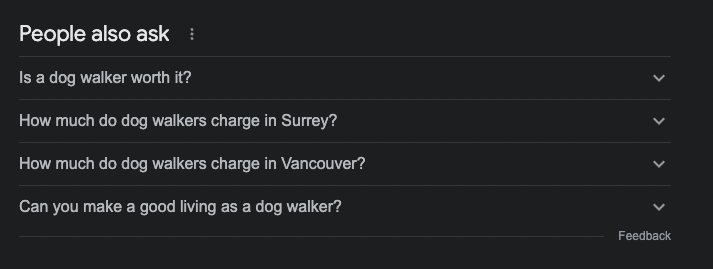
- For related phrases, scroll to the bottom of the search page:
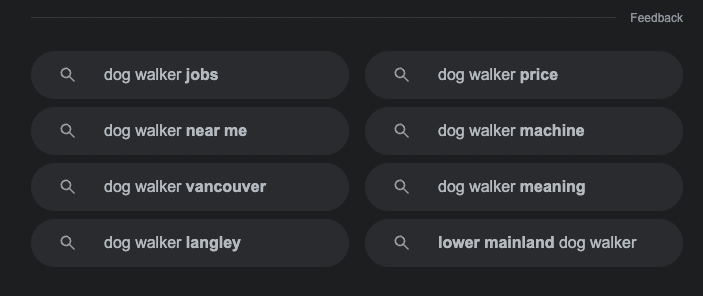
2. Content Creation
Instead, use keyword research to shape your website content.
Do you have a blog? If you don’t, I highly encourage you to create one.
Firstly, Google LOVES long-form content (think 1000 words or more). If you craft a blog post that addresses questions that your audience is most likely to ask, Google might flag your post as a possible answer to someone’s query.
This, along with the other SEO pillars, can boost your chances of being visible on the Google Search results page, if not rank among the top of the first page.
Secondly, this can help establish your brand’s credibility. The more you can address your audience’s needs and wants, the more likely they are to know, like, and trust you.
Win-win!
3. On-page SEO
On-page SEO has to do with how you can tweak your website’s pages in order to increase your search engine ranking.
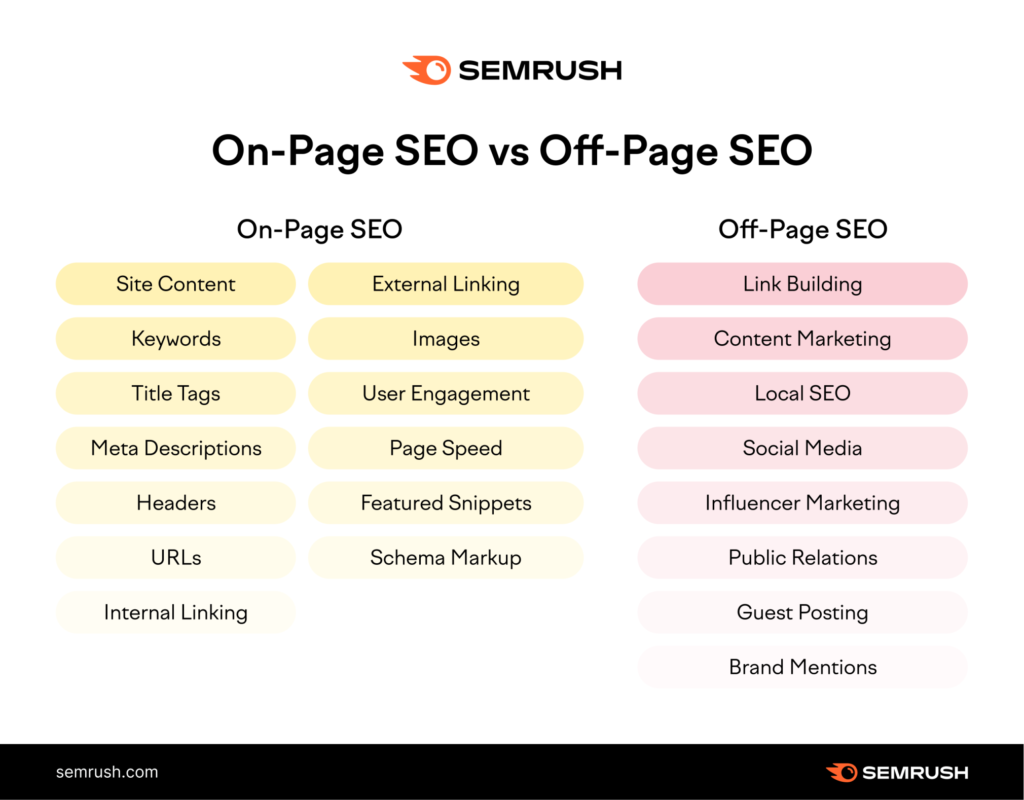
Don’t worry if a lot of these lingo seem foreign right now.
Let’s focus on three aspects of on-page SEO:
- Title Tags: these are typically pieces of code on web pages that identify the page titles. Note that there’s usually one title tag per page, or at least there should be.
- Headers: these mark sections and subsections on a page. For example, the header for this section of the blog post is “3. On-page SEO” and it’s marked with a heading level 2 (H2) tag. The heading level 1 (H1) tag is reserved for page titles, so there should only be one H1 tag per page.
This is not only important for SEO but also for web accessibility.
Tl;dr, just know that headers and title tags help search engines crawl and find information easier. - Meta Descriptions: they clue the reader into what the webpage is about. These are usually the text under the title of a search result:

Something to note is that, normally, title tags, headers, and meta descriptions are only customizable by code.
But not everyone speaks code.
Showit, the website-building platform I use for my business, allows you to customize your titles, headers, and meta descriptions.
Game-changer!
Easy pro tip: Make sure that you don’t have any broken links on your website! Not only is this bad user experience but Google doesn’t like it, either, so it might penalize your website and flush you down the search engine toilet (aka put you on pages 3 and beyond).
We didn’t talk too much about images as part of on-page SEO but think about it like this—would you read a blog post or online content that didn’t have pictures or videos?
Nope?
The search engines didn’t think so either, so they probably wouldn’t recommend search results with little to no pictures at the top of the page.
4. Link Building
As you saw in the last image, link building is an off-page SEO strategy.
That’s because it’s not achieved by tweaking tags or code on your website.
Link building is the process of establishing authority using external posts.
For example, say I make a guest appearance in a podcast. When the shownotes are published on the podcast website, they might use a link to redirect to my business website, contrastcollective.co.
In Google’s eyes, this is valuable because other businesses and websites deem my website credible.
If you partner with other businesses/websites that closely align with your vision—voila.
Street cred established.
5. Technical SEO
We’ll briefly cover technical SEO here since it can get very convoluted real quick.
Essentially, technical SEO has to do with how to make web crawling efficient for search engines.
Two ways to address technical SEO is:
- To have a “blueprint” of how pages are nested on your website (called a sitemap), and
- Making sure that pages load quickly, which can be partially addressed by compressing your media
And there you have it—you now know the basics of SEO.
Go ahead and apply the tips from this post on your website and let me know if you have any questions!
Sign up for emails that remind you of the beauty in the mundane and the humanity in business—so you can apply it to your website, brand, and your overall digital presence.
De-influencing what "building your business" looks like.
the only emails on the internet that talk about the *unglamorous* side to entrepreneurship.